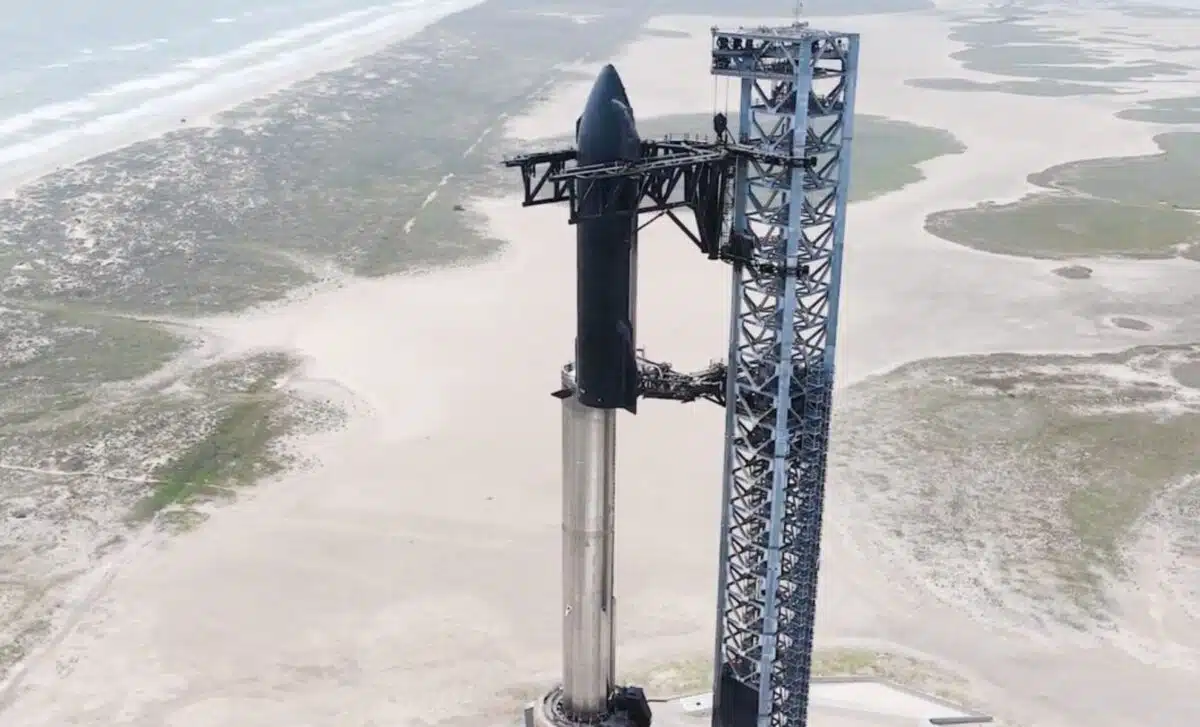
By Lydia Amazouz Published on May 17, 2024 08:57
Collected at : https://dailygalaxy.com/2024/05/spacex-prepares-fourth-starship-test
SpaceX is making significant progress toward the fourth test flight of its Starship megarocket, stacking the rocket’s upper stage on its Super Heavy booster at the Starbase site in South Texas.
This preparation marks a crucial step in the ongoing development and testing of the Starship system, which aims to revolutionize space travel.
SpaceX Technicians Completed the Stacking and Testing Process
Technicians at SpaceX recently completed the stacking of the Starship for its fourth test flight, placing the “Ship” upper stage atop the “Super Heavy” first-stage booster. This process, carried out using the “chopstick” arms of Starbase’s giant launch tower, was documented in a video and photos shared by SpaceX.
The stacked rocket stands an impressive 400 feet tall, making it the largest and most powerful launch vehicle ever constructed. The stacking follows earlier tests where the Raptor engines of both the upper stage and booster were ignited in static fire tests to verify their performance.
Wet Dress Rehearsal and Preparations
Following the stacking, SpaceX began a series of full-stack tests, including a partial load of propellants. A full Wet Dress Rehearsal (WDR) is expected soon, possibly as early as May 18. During a WDR, the vehicle is fully loaded with propellant and undergoes a simulated launch countdown to ensure all systems are functioning correctly.
This rehearsal is crucial for verifying the readiness of the rocket and its associated ground systems before an actual launch. SpaceX has conducted WDRs for each of the previous Starship test flights, continually refining the launch pad and tank farm systems to improve reliability and safety.
Progress and Future Ambitions
SpaceX is not only focused on the upcoming test flight but is also advancing its broader Starship program. The company is preparing a second launch tower at Starbase and upgrading facilities at its Cape Canaveral site in Florida. These developments are part of SpaceX’s strategy to support a high cadence of Starship launches in the future.
The FAA is currently reviewing a revised Environmental Impact Statement (EIS) for Starship operations at Launch Complex 39A (LC-39A) in Florida, which, if approved, will enable up to 44 Starship launches per year. This expansion underscores SpaceX’s ambition to establish Starship as the backbone of its space exploration and transport missions.
Recent Test Flights and Improvements
Starship’s previous three test flights have shown incremental improvements in performance. The first test flight in April 2023 ended prematurely due to stage separation failure, while the second flight in November 2023 successfully achieved stage separation and doubled the flight time. The third flight in March 2024 lasted nearly 50 minutes but ended with the upper stage breaking apart upon reentry.
Each flight has provided valuable data, driving enhancements in vehicle design and launch operations. The fourth test flight, anticipated to launch within the next few weeks, aims to build on these successes and further demonstrate Starship’s capabilities.
Broader Implications for Space Exploration
The development of Starship is pivotal for SpaceX’s long-term goals, including Mars colonization, lunar missions, and rapid Earth-to-Earth travel. The successful deployment of a fully operational Starship system will revolutionize space travel by offering unprecedented payload capacity and reusability.
This will reduce the cost of access to space and enable ambitious missions that were previously considered infeasible. As SpaceX continues to refine and test Starship, the global space community watches with anticipation, recognizing the potential for this groundbreaking technology to transform human space exploration.
The ongoing advancements in Starship’s development highlight the importance of iterative testing and continuous improvement in achieving groundbreaking technological milestones. With each test flight, SpaceX moves closer to realizing its vision of making space travel accessible and sustainable for a new era of exploration and discovery.

Leave a Reply